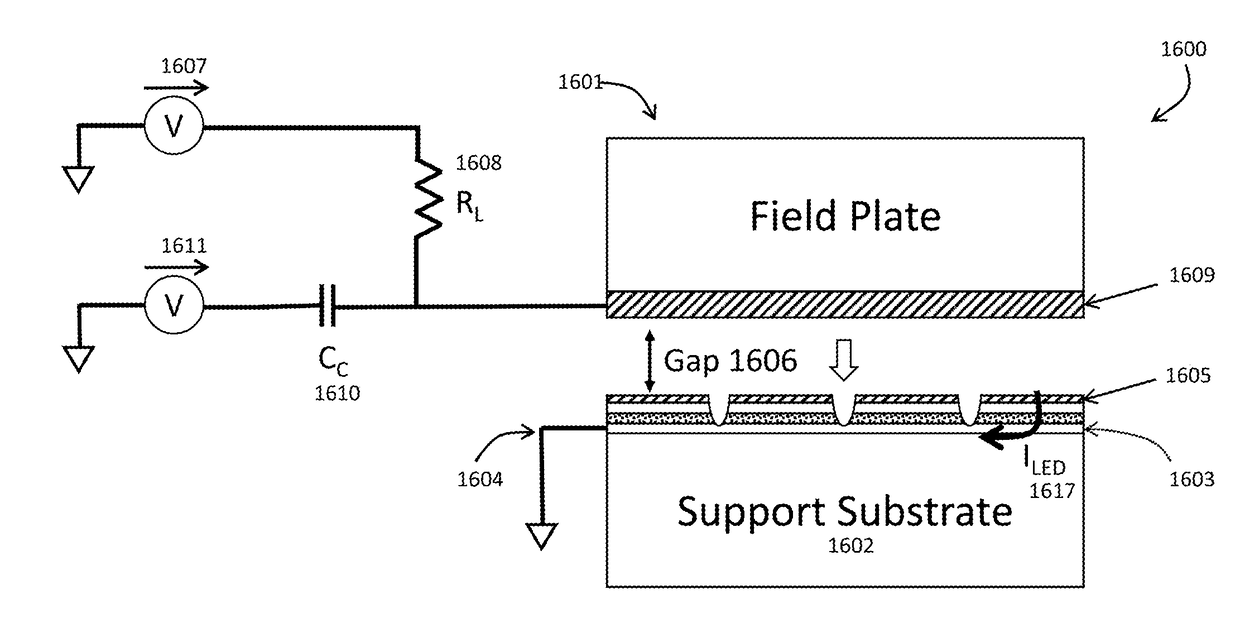Light emitting diode (LED) test apparatus and method of manufacture
- Summary
- Abstract
- Description
- Claims
- Application Information
AI Technical Summary
Benefits of technology
Problems solved by technology
Method used
Image
Examples
embodiment 1700
[0112]Although this invention has been described with a common contact existing under the LED devices, other configurations for injecting current are possible. FIG. 17A shows another embodiment 1700 where an analogue to the field plate 1701 is present within support substrate 1702 below the plurality of LED device structures such as LED device 1703. Under the lowest LED device structure layer (the n-layer in examples described in this invention), a dielectric layer 1704 and electrode 1705 completes the support substrate capacitive coupling device. Electrode 1705 is connected to a voltage source 1706. The field plate is connected to a separate voltage source 1707 and field plate electrode 1708. In this example, a camera 1709 is placed above the field plate to capture the light emission response of the plurality of LED devices under test. In this example, the isolation between devices is shown to be complete, however this method would still function with or without full isolation of t...
embodiment 1800
[0113]In yet another embodiment, C2I functional testing could also be applied to a modification of the test configuration of FIG. 17A that eliminates the need for a buried electrode within the support substrate. In this embodiment, the dielectric property of the support substrate itself is used to inject current through the LED devices. For example, a quartz, sapphire or plastic support substrate could serve as dielectric 1704 in FIG. 17A. FIG. 18 shows a specific embodiment 1800 of this configuration. A support substrate 1801 having adequate dielectric properties and thickness containing a plurality of LED devices on its surface such as LED device 1802 is placed on top of an electrode 1803 connected to a voltage source 1806. Field plate 1804 having a dielectric layer 1805 and electrode 1806 connected to a second voltage source 1807 completes the C2I functional test circuit. A camera 1808 placed above field plate 1804 is shown in this embodiment. The equivalent electrical circuit wo...
PUM
 Login to View More
Login to View More Abstract
Description
Claims
Application Information
 Login to View More
Login to View More - R&D
- Intellectual Property
- Life Sciences
- Materials
- Tech Scout
- Unparalleled Data Quality
- Higher Quality Content
- 60% Fewer Hallucinations
Browse by: Latest US Patents, China's latest patents, Technical Efficacy Thesaurus, Application Domain, Technology Topic, Popular Technical Reports.
© 2025 PatSnap. All rights reserved.Legal|Privacy policy|Modern Slavery Act Transparency Statement|Sitemap|About US| Contact US: help@patsnap.com



